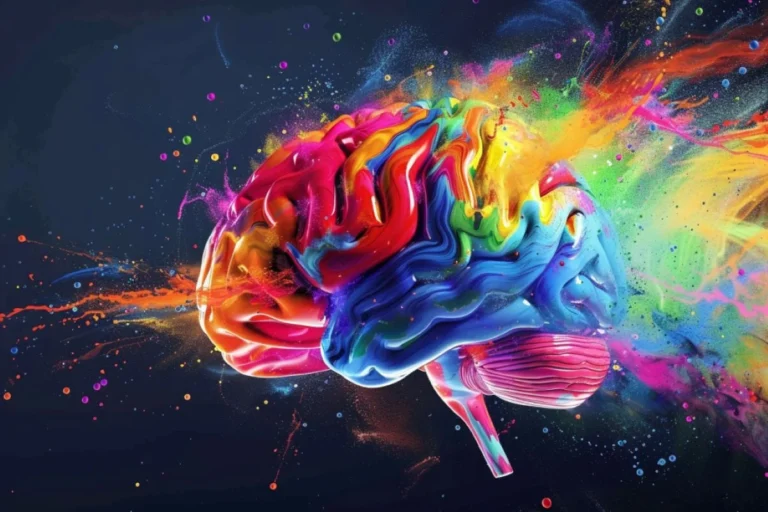Use Mental Stimuli to Brainstorm is Post #6 in a series from a presentation entitled 11 Great Creative Slip-Ups: The Most Common Mistakes in Brainstorming. The introduction to the series begins here.
The Problem: People brainstorm without any tools, games or props
Hello there. Welcome.
Today we’re going to brainstorm ideas. Ok? Good. Ready? Set? Go!
So what’s your idea? No seriously, I don’t have all day. Hurry up! What’s your Big Idea? What are you waiting on? Chop, chop! Brainstorm! Now, damn it! NOW!
Maybe that’s not exactly how some people start a brainstorm, but sometimes, it feels pretty close.
The only mental stimuli I’m feeling here is the sudden ache between my ears. And I haven’t even finished my coffee.
Despite book titles to the contrary, few people – if any – can flick on their creativity. It’s even more difficult if you’re trying to be creative in a vacuum. And by “vacuum,” I mean conference rooms which are The Four Less’s.
- Feature-less
- Air-less
- Food-less
- Spark-less

Sparks are Mental Stimuli
‘Sparks’ are anything thought that acts as a catalyst or trigger in the brain to stimualte an idea.
Think of them as kindling, a jolt of electricity, or a shot of adrenaline that combusts in your head. Suddenly you have an idea!
If you could simplify idea-making, it comes down to:
Your Problem + A Spark = New Idea
Sparks come in four forms:
- Visual – pictures, images, graphs, symbols
- Words – descriptive nouns or verbs, also word association or metaphors
- Physical activities – experiential or kinaesthetic (touch), getting the hands moving or playing with things (clay, crayons, LEGOs, blocks)
- Daydreaming – either individually or as a group, often using exercises like ‘excursions.’
Side note: An excursion is a mental game where ask you/the team a random question or involve them to do something random, then ask them to “force fit” the answers from the random assignment to the specific situation at hand. One of my favourites is New Point of View.
These stimuli are mentally conscious sparks. They’re deliberate.
Just as effective – but much less deliberate – are unconscious sparks.
You’re typically not aware of these unconscious types, but we’ve all felt them. They are the somehow-somewhere-what-the-F-was-that?! spark that came to you walking down the street, or in the midst of another thought, or in the middle of the night.
That’s not to say they can’t be made to be deliberate. Read my article to stimulate incubation and subconscious thinking.
Of course you can brainstorm without sparks, but the bigger question is WHY?
As I said, sparks are the fuel that ignites imagination. To improve your brainstorming, either solo or in group settings, get your hands on as many mental stimuli as possible.
The solution: Use mental stimuli for brainstorming
Here’s three ways to kick-startthe brain creatively.
1. Use sparks in your icebreaker.
Slip-Up #2 (Get People Into the Open Mindset) touched on the importance of icebreakers as a way to get brainstorm participants in the right mindset. Good icebreakers involve sparks. Here’s three good websites with examples and suggestions.
80+ Creative Icebreakers for Brainstorming is superb, lots of great suggestions
Brainstorming Session Icebreakers, tips from Michael Michalko
Icebreakers to Kick-Start Brainstorming and Creative Discussions by Upskill Consulting
2. Have exercises to keep energy high.
Once you move from ice-breaker to actual brainstorming, exercises and games will continue the momentum. Again, either for solo or group brainstorming, the keys to using successful exercises are:
- Have a lot. For group brainstorms, I’ll have between 15-20 exercises ready to use.
- Keep them in high rotation. Don’t explain too much about the exercise. Just give them enough instruction to participate. Once the exercise starts to wane, toss it and begin another.
- Have exercises for both talkers and thinkers. Some exercises involve people talking, laughing and shouting at each other. They’re great for extroverts, but people who are more internal thinkers (the introverts) need different exercises to fire their imagination. Mix up exercises between the two, or frankly, let people try different ones at the same time.
Every now and then I’m asked for a book recommendation on icebreakers and mental stimuli. Perhaps the most comprehensive is 101 Activities for Teaching Creativity and Problem Solving” by Arthur VanGundy, a pioneer in creative thinking. The book’s expensive, but it’s big – nearly 400 pages packed with ideas, exercises and icebreakers.
If that’s too much money, here’s a link to 25 Useful Brainstorming Techniques from the website Personal Excellence.
3. Visual stimuli work fastest.
Of all the brainstorm exercises I’ve use, I prefer ones which involve visual stimuli, particularly creating .
Mood boards are mass visual collections of inspirational stimuli. The ingredients are up to you. I involve the brainstorm participants to make boards from:
- Photographs, pictures or images ripped from magazines or downloaded online
- Postcards – free ones from coffee shops or theatres, or good ones purchased from a variety of places. My favourite place are museum gift shops.
- Words or text – again, ripped from magazine headlines, or words selected by random by the group and printed out on coloured paper
- Samples – of the product or service
- Typical items from the target audience
- News – traditional articles, blog posts, Tweets, web pages, screen grabs from apps, etc.
No ingredient is wrong. The more, the messier, the better.
All of it gets mounted on a large wall or board. Use it for the brainstorm as inspiration for ideas, but also keep it around for inspiration later on. I’ve brought them into pitches, or showed them to clients for discussion.
If you want to return to the original article with links to the other ‘Slip-Ups’, click here.


No comment yet, add your voice below!